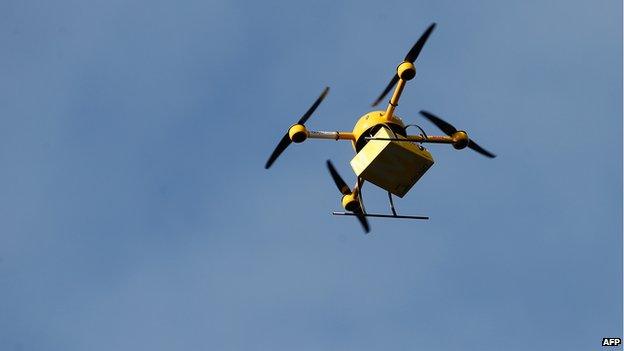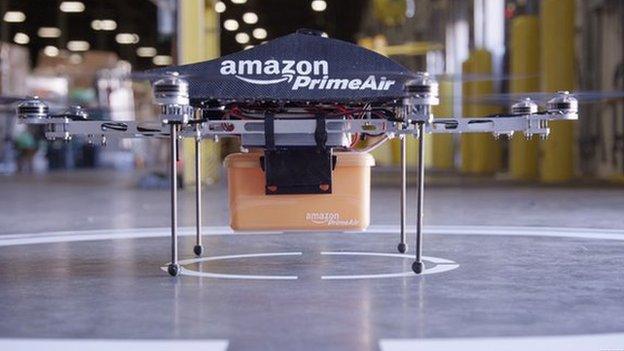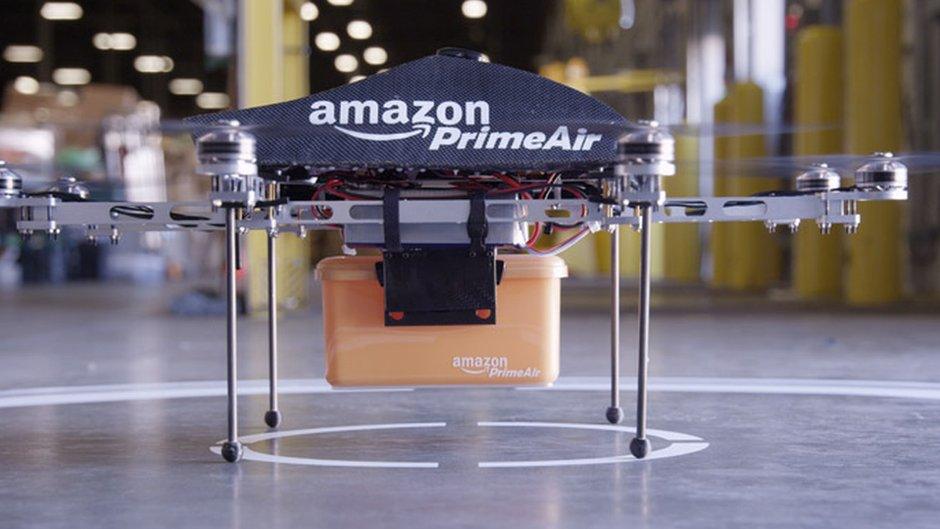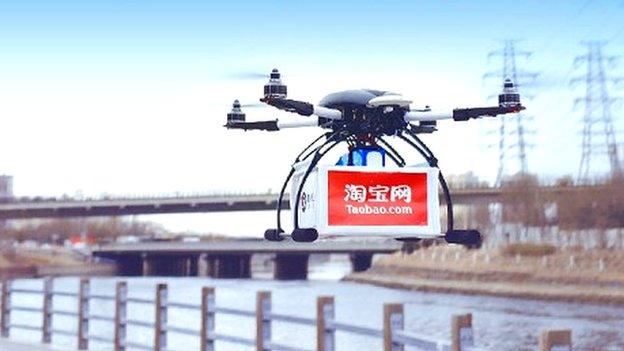Amazon suggests a separate airspace for delivery drones
- Published

The mailman of the future might just look something like this
US online retailer Amazon has called for a separate airspace zone for commercial drone flights that could deliver goods to customers.
The zone would have the unmanned vehicles flying below normal planes at a height of 200 to 400ft (61 to 122m).
Air traffic control for the suggested drone space would be handled by an automated computer system.
Chinese internet giant Alibaba, Google and other parcel services have also carried out private trials of drones.
Amazon, Google and other mail services see drones as future delivery vehicles, but still face regulatory hurdles.
"Drones have been around for a long time when it comes to non-commercial sectors," Andrew Milroy, technology analyst with consultancy Frost & Sullivan, told the BBC.
"But there are in fact all kinds of commercial uses for drones with parcel deliveries being just one of them. Just think of building maintenance, architects, real estate agents, etc."
Commercial potential
Laying out its suggestions, external at a NASA convention in California, Amazon says that clarifying the use of airspace was essential for harnessing the potential of small unmanned aircraft systems in civil airspace.
"So the commercial pressure in the US to enable that technology is becoming stronger and stronger," Mr Milroy explained.
According to the Amazon draft, a segregated civil airspace would be carved out below 500ft to enable drones to fly unhindered and without endangering civilian or military planes.
The proposal suggests airspace below 200ft for low-speed localised drone traffic such as surveying, filming and private hobby drones.
The next level between 200ft and 400ft would become a "high-speed transit space", for drones like the ones Amazon is aiming for with its future drone delivery plans.
A no-fly zone between 400ft and 500ft would be a buffer to all civilian, cargo and military aeroplanes using the space above that 500ft mark.
Citing the air traffic controller workload as the "single-greatest functional limitation on airspace capacity," the online retailer suggests that traffic in the drone zone would be handled by a computerised system.

DHL is using a drone to fly to a small North Sea island
Drone mail service
Details about how Amazon's proposed delivery drones may work have been published by the US Patent Office earlier this year.
According to the patent, the drones would be able to track the location of the person it is delivering to by pulling data from their smartphone.
"So the technology is there, the issue they are facing is the regulators - and regulators always take some time to catch up with new technology," said Mr Milroy.
Amazon is not the only company examining the use of drones as delivery vehicles, external.
Fellow internet giant Google has tested a drone delivery project in Australia's remote outback regions.
China's biggest internet retailer Alibaba has also tested drone-based deliveries to hundreds of customers
Germany's DHL has used delivery drones, external on a test basis to supply medicine to a small island in the North Sea.
- Published8 May 2015

- Published19 March 2015

- Published4 February 2015
